Legendary Legion. How foreign defenders of France fought
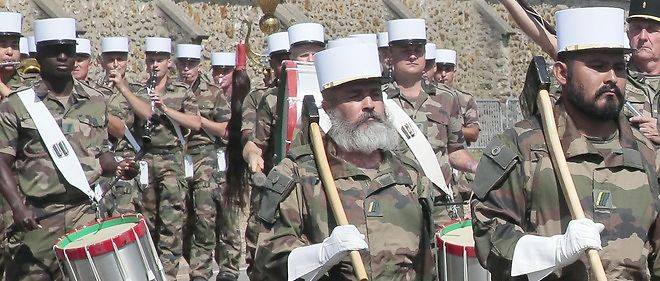
By the beginning of the 1830s, France was preparing for the colonization of Algeria, a vast North African territory that was not only of economic and geopolitical interest, but had also been a threat to the French state until a certain time. On the coast of Algeria there were numerous pirates who committed attacks on merchant ships of various countries of the world. Once Algerian pirates regularly attacked the Mediterranean coast of European countries - Italy, France, Spain, leading men and women captive. By the XIX century, such raids stopped, but the Algerian pirates did not intend to stop the looting of merchant ships, even despite repeated punitive expeditions - not only the French, but even the Americans.
Within three weeks, from 14 June to 5 July 1830, the French expeditionary forces, landing on the Algerian coast, took control of Algiers, the current capital of the country. For the landing operation, 3 infantry division forces, 3 cavalry squadrons and 15 artillery batteries with a total strength of up to 37 624 military personnel were engaged. The army headed to Algeria on 102 warships, including 11 battleships, 24 frigates, 8 corvettes, 27 brigs, 6 steamers, etc. In addition, the fleet included 570 merchant ships. The general leadership of the expedition to Algeria was carried out by the Minister of War of France Count Louis-Auguste Victor de Gen de Bourmont (1773-1846). The French troops managed to defeat the Algerian deeds and the Arab-Berber militia units that came to his aid. For the successful operation to seize Algeria, Count de Burmon received the military rank of Marshal of France. However, the defeat inflicted on the act did not mean that the French were immediately able to establish control over the entire territory of Algeria. It was for his final conquest that the French leadership decided to create the Foreign Legion.
9 March 1831. King Louis-Philippe signed a decree creating a new armed group. This idea was presented to the king by a Belgian officer, Baron de Beguard, who was in the French service. He explained the need to create the Legion by the fact that this military unit would be betrayed by France and the French government, but, being unrelated to French society, it would be able to carry out any tasks assigned to it. It was decided to recruit foreign legion men - foreigners in age from 18 to 40 years. The backbone of the officer corps of the Legion was formed from former Napoleonic officers - experienced military, who took part in numerous wars. As for the rank and file, he was staffed by immigrants from other European states, primarily from Switzerland, Germany and Italy, who were at that time the main suppliers of mercenaries for European armies. However, French citizens could also enroll in the Legion - but without specifying the name and surname, and in this case, they seemed to give up their past life, social status, and began life from scratch - as soldiers of the Foreign Legion. This principle of recruitment was ideal for people who had problems with the law, or for some reason wanted to hide from society.
The Foreign Legion was able to show its effectiveness in battles in the first decades of its existence in North Africa, where France waged a stubborn war for the conquest of Algeria, and then for finding new colonies. As a result of the colonial expansion of France, by the end of the 19th century, vast territories in the Maghreb, Sahara and Sahel — the lands of present-day Algeria and Tunisia, Morocco and Mauritania, Mali and Niger, Burkina Faso and Guinea, Senegal and Chad — turned out to be under control. A huge contribution to the conquest of the African colonies was made by soldiers and officers of the Foreign Legion. The Foreign Legion took part in the Crimean War on the territory of Russia, including the famous battle of Inkerman in November 1854.
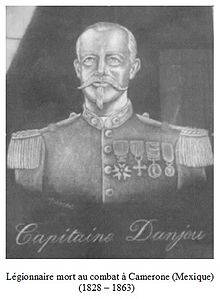 In 1861, French, Spanish and British troops were sent to Mexico. The intervention was a response to the termination of payments on Mexican foreign debts. For military operations in Mexico, France involved, including, and units of the Foreign Legion. 30 April 1863, near the Mexican village of Cameron, was a battle that went down in history as the true Day of Glory of the Foreign Legion. During the day, the only company of legionnaires of 65 numbers resisted many times more superior Mexican forces in the number of at least 2000 fighters. The 3-th company of the 1-th battalion of the Foreign Regiment was allocated by the command to escort the convoy from Veracruz to Pueblo. In the transports were equipment, money and weapon. The escort was commanded by Captain Jean Dunge (1828-1863). He was only thirty-five years old, but he already had an enormous experience of participating in hostilities. In 1847, Mr. Donjo, the son of an officer and the owner of a small factory, entered the famous Saint-Cyr military school, and after graduating he was assigned to the 51 Infantry Regiment. However, already in 1852, Jean Dungeu transferred to the Foreign Legion. In 1853, he lost a hand — a gun accidentally exploded during a topographic expedition in Algeria. But Dungeon established the prosthesis and continued to serve in the Foreign Legion. In addition to Dungeon, there were also 2 officer in the company - Junior Lieutenant Maudet and Junior Lieutenant Vilen, as well as legionnaires of various nationalities - French, Spaniards, Italians, Belgians, Germans and Poles. The command set before the company the task of conducting reconnaissance before the movement of the convoy, patrol the road and dispel the ambushes of the Mexican partisans.
In 1861, French, Spanish and British troops were sent to Mexico. The intervention was a response to the termination of payments on Mexican foreign debts. For military operations in Mexico, France involved, including, and units of the Foreign Legion. 30 April 1863, near the Mexican village of Cameron, was a battle that went down in history as the true Day of Glory of the Foreign Legion. During the day, the only company of legionnaires of 65 numbers resisted many times more superior Mexican forces in the number of at least 2000 fighters. The 3-th company of the 1-th battalion of the Foreign Regiment was allocated by the command to escort the convoy from Veracruz to Pueblo. In the transports were equipment, money and weapon. The escort was commanded by Captain Jean Dunge (1828-1863). He was only thirty-five years old, but he already had an enormous experience of participating in hostilities. In 1847, Mr. Donjo, the son of an officer and the owner of a small factory, entered the famous Saint-Cyr military school, and after graduating he was assigned to the 51 Infantry Regiment. However, already in 1852, Jean Dungeu transferred to the Foreign Legion. In 1853, he lost a hand — a gun accidentally exploded during a topographic expedition in Algeria. But Dungeon established the prosthesis and continued to serve in the Foreign Legion. In addition to Dungeon, there were also 2 officer in the company - Junior Lieutenant Maudet and Junior Lieutenant Vilen, as well as legionnaires of various nationalities - French, Spaniards, Italians, Belgians, Germans and Poles. The command set before the company the task of conducting reconnaissance before the movement of the convoy, patrol the road and dispel the ambushes of the Mexican partisans. 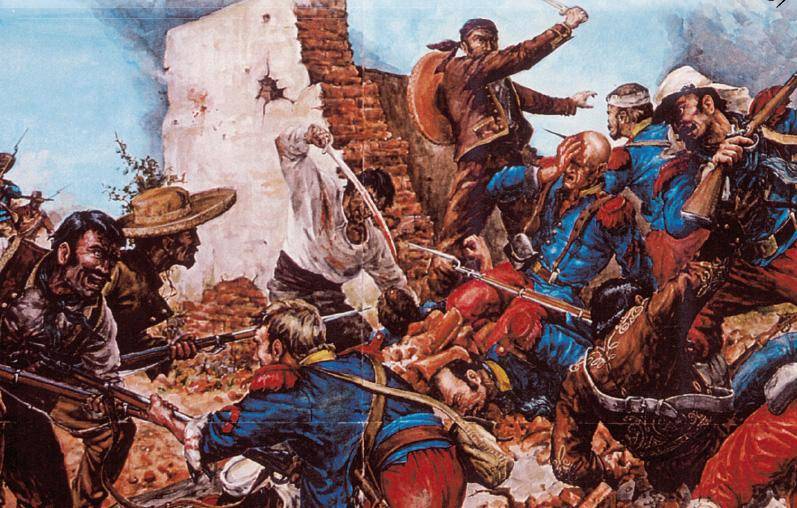
On the morning of April 30, the legionnaires, who set up a halt near the village of Cameron, noticed an approaching enemy. It was a Coxla squad of 250 Mexicans, commanded by Don Hilario Ozario. Danju decided to retreat to the village, since in the open country it would be insane to resist so many Mexicans. However, moving to Cameron, the legionaries discovered another Mexican detachment - the people of Colonel Milan. In the end, the legionaries took refuge in one of the village buildings and began to defend it. Colonel Milan demanded that foreign players surrender, but was refused. Since the Mexican cavalry did not have a good preparation for action on foot, the legionnaires managed to conduct a long defense. During this time, three infantry battalions arrived to help the Mexicans. Captain Dunge was killed, after which Junior Lieutenant Vilen took command, also killed shortly. In the end, only Junior Lieutenant Mode, Corporal and 3 Legionnaire survived. After that, Mode led his subordinates into a bayonet attack. Mexicans opened fire. Mode died. The wounded Corporal and two legionnaires survived. Shocked by this, the commander of the Mexican compound, Colonel Milan, ordered that the wounded surviving legionnaires be treated. Three surviving heroes demanded to give them the officer's corpse and the flag of the unit and provide a corridor for exit. In total, 65 officer and 3 lower ranks were killed in this battle of 49 legionnaires. Twelve wounded were captured by Mexicans. The day of the battle of Cameron forever entered the history of the Foreign Legion as an example of the highest military valor of its soldiers and officers.
In the late XIX - early XX centuries. in the Foreign Legion appear quite numerous recruits from the Russian Empire. There were revolutionaries hiding from the royal power, criminals, and adventurers - Russians, Jews, and Poles. A well-known Russian religious philosopher Nikolai Onufrievich Lossky (1889-1870) served as a short time in 1965 in one of the units of the Legion on the territory of Algeria. In the Legion, he found himself due to the material difficulties that he experienced when he was a student at the University of Bern in Switzerland. But Lossky served very little in the Legion. But on the other hand, the life of another Russian, Zinovy Peshkov (1884-1966), who was not only promoted to officers' epaulets, but also became a corps general (colonel-general) of the French army, was forever tied to the French army. In fact, Zinovy Peshkov was called Zalman Sverdlov. He was brought by his elder brother to the most famous Bolshevik and one of the most senior figures of the Soviet power, Yakov Sverdlov, and he got the name Peshkov from his godfather - Maxim Gorky.
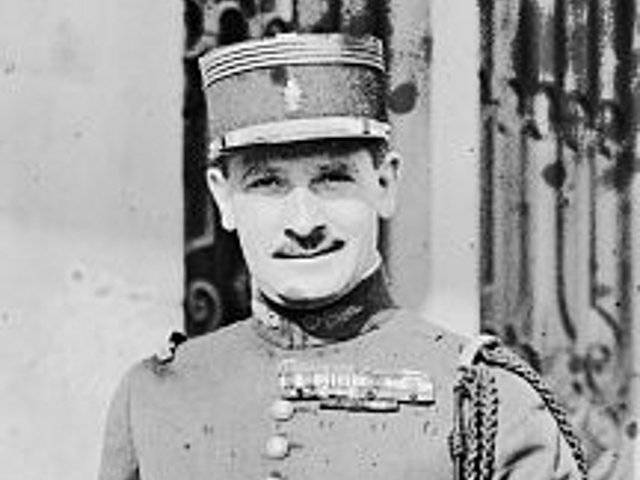
Coming from a Jewish family, Zalman Sverdlov was baptized into Orthodoxy in 1902 and received a surname and patronymic from his godfather. In 1904, Zinovy emigrated to Canada, then moved to the United States, and then to Europe - to Italy and France. When World War I began, the thirty-year-old Zinovy Peshkov volunteered for the French Foreign Legion. In the battle of Verdun, he lost his right arm, but after rehabilitation he recovered in the Legion and continued to serve - but this time, as an interpreter in various French military missions - in the USA and Romania, China and Japan, in Georgia, in Siberia - under Admiral Kolchak and in the Crimea under Baron Wrangel. In 1921-1926 Peshkov served in Morocco, then in the Ministry of Foreign Affairs of France, then, in 1937-1940. - again in Morocco, in the Foreign Legion. During the Second World War, he joined the Free France movement, in 1943 he received the rank of general and headed the mission of the Free France in China. Only in 1950, at 66, was Zinovy Peshkov retired with the rank of corps general.
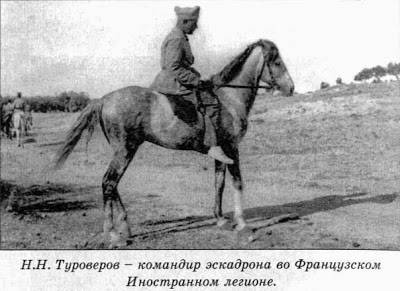
It was possible to serve in the Foreign Legion and the famous Cossack poet Nikolai Nikolaevich Turoverov (1899-1972), who entered the service in the 1939 year, having experienced this much hardship during the harsh emigre life. The unit where Turoverus served was stationed in North Africa, then sent to Lebanon to suppress the rebel Druze tribes. Later, the 1 Cavalry Regiment of the Legion was transferred to France, where he participated in defensive battles against the Nazis until the surrender of France.
In the Foreign Legion served as the murderer of Simon Petliura - Samuel Schwarzburd (1886-1938), a representative of a completely different ideological direction. Anarchist, a member of the First Russian Revolution 1905-1907, Schwarzburd settled in Paris in 1910, and after the outbreak of the First World War, he joined the French Foreign Legion and fought in the 363 Infantry Regiment for three years. For valor, he was awarded the Military Cross - the highest legionary awards. Then there was a serious injury, demobilization and return to Russia. At home, Schwarzburd served for some time in the Red Army, but became disillusioned with the Soviet government and went back to France. There he worked as a watchmaker, and on May 25 of the year 1926 shot Ukrainian nationalist leader Simon Petliura, avenging him, thereby, for the death of his relatives and tribesmen during numerous Petliura pogroms.
Thus, we see that in the Legion, even from among the natives of Russia, served a variety of people - various political beliefs, social status and occupation. For some of them, the Legion became a way to avoid total poverty and slipping to the bottom, someone opened the way to a career in the French armed forces, and some entered the service simply from the desire to test themselves as warriors.
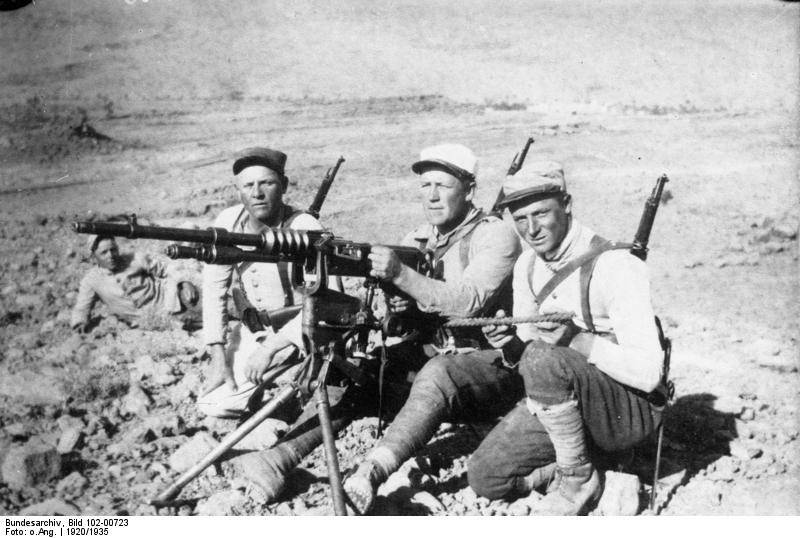
If we talk about all the operations and wars in which the Foreign Legion took part, a very impressive list will be released. These are: the war in Algeria (half a century, from 1831 to 1882), the fighting in Spain in 1835-1839, the Crimean War with Russia (1853-1856), the fighting in Italy in 1859, the war in Mexico in 1863-1867, pacification of Algerian tribes in 1882-1907, fighting in Vietnam in 1883-1910, in Taiwan in 1885, in Dagomey in 1892-1894, Sudan in 1893-1894. , Madagascar in 1895-1901, Morocco in 1907-1914, in the Middle East in 1914-1918, in Vietnam in 1914-1940, Morocco in 1920-1935, Syria in 1925-1927, 1945-1954 ., in Indochina in 1947-1950, in Madagascar in 1952-1954, in Tunisia in 1953-1956, in Morocco in 1954-1961, Algeria in 1982-1983 years. After the liberation of the French colonies, the legionnaires inevitably participated in numerous peacekeeping and anti-insurgency operations in the countries of Asia and Africa. These include actions in Lebanon in 1991-XNUMX, and the Gulf War in XNUMX, and operations in Somalia and Bosnia, Kosovo and Mali, in Iraq. Of course, the legionnaires of the First and Second World Wars experienced themselves in full.
Today, the Foreign Legion continues to exist as a mobile unit that can quickly perform tasks in various parts of the world. The principles of his recruitment practically did not change - still the officer corps is staffed by French personnel officers, and the rank and file - by volunteers from among foreigners. But the conditions for receiving a pension have changed - now the legionnaire should not serve 15, as before, but 19,5 for years to enter retirement. As before, nobody tries to ask legionnaires about the past - if recruits have no problems with Interpol, then they can easily enter the service - of course, if they are suitable for health and physical characteristics.
Information